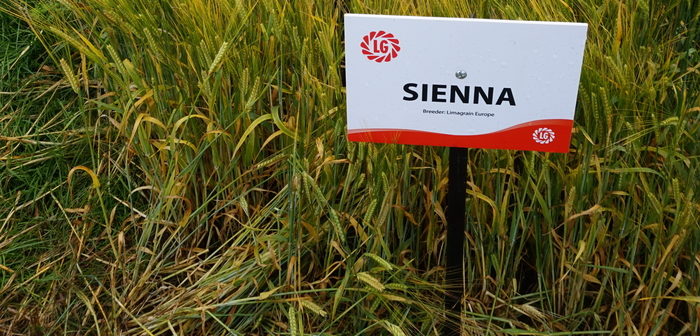Spring barley varieties that have a better tillering ability could be linked to higher yields helping to explain why many of the newer varieties are offering such increases in yield claims leading plant breeders Limagrain UK.
This is based on agronomy trials carried out by the breeder that have focussed on monitoring the tillering capacity of spring barley lines over many years.
“It is quite evident that many of the newer varieties appear to be producing higher tiller counts,” says Limagrain’s arable technical manager, Ron Granger.
“The key to upping spring barley yields is achieving high final head counts and choosing a variety with a greater tillering ability.”
Over the last three years of Limagrain trials it is clear to see that newer higher yielding varieties show a corresponding rise in tiller number. First on the Recommended List in 2009, Concerto has a lower tillering ability than newer varieties such as Sienna, which was first listed in 2015. This is a trend that has been seen over three years of Limagrain trials.
“It is a significant contributory factor in the 10% increase in yield seen from the top varieties added to the AHDB Recommended List over the last 10 years.”
Varieties such as Concerto can still achieve high yields if the final target tiller count of about 775m2 is met, but a cultivar that initially produces more tillers will compensate better for tiller loss in stressful conditions, helping crops reach their full potential in most years.
“Looking at tiller counts versus yield from trials, our analysis would suggest that higher tiller counts are increasing yield potential; for full yield potential, we should be aiming at a final tiller count of 775 – 800 /m² in line with the AHDB Barley growth guide recommendations.”
“Spring barley varieties with higher tiller counts are desirable, as in challenging periods during the spring, these varieties are able to lose tillers without a significant yield penalty whereas low tillering varieties will struggle to compensate when the environment is not favourable, due to a loss of tillers.”
As newer spring barley varieties generally have stronger tillering ability, careful attention should be paid to seed rates to optimise plant populations and hit target head numbers, he notes.
When considering seed rate in relation to tillering, our trials comparing variety seed rates over various seasons and regions suggest that with the more vigorous, higher tillering varieties, the optimum seed rate is 350 seeds/m2 when drilling in ideal conditions around mid-March, adds Mr Granger.
“This figure can be adjusted up or down depending on weather, drilling date, seed-bed quality, moisture availability and perhaps most importantly, the grower’s own experience on each site.”
“A lower rate of 300-325 seeds/m2 could suffice if drilling into an “onion bed” in March, but where forced to drill into April due to weather or agronomic reasons, pushing up to 400 seeds/m2 may be more appropriate.”
Balanced crop nutrition plays an important role in tiller survival and in the past, growers have been reluctant to increase nitrogen application rates in spring malting barley crops through fear of exceeding maltsters’ grain nitrogen limits.
“However, the latest Recommended List varieties produce more tillers and higher yields, so in some situations additional nitrogen is required to maintain tiller numbers and maximise crop potential,” says Mr Granger.
In our own trials, we have seen a benefit of upping nitrogen rates from a standard seed bed application of 120kg/ha to 150kg/ha, with the additional 30kg/ha applied at tillering.
“This was previously considered a risk to malting quality, but due to higher yields diluting the additional nitrogen taken up by the plants, this can be done without exceeding grain N percentage limits for malt distilling of 1.65%.”




